Castrato
A castrato (Italian, plural: castrati) is a type of classical male singing voice equivalent to that of a soprano, mezzo-soprano, or contralto. The voice is produced by castration of the singer before puberty, or it occurs in one who, due to an endocrinological condition, never reaches sexual maturity.
| Voice type |
|---|
| Female |
| Male |
Castration before puberty (or in its early stages) prevents a boy's larynx from being transformed by the normal physiological events of puberty. As a result, the vocal range of prepubescence (shared by all sexes) is largely retained, and the voice develops into adulthood in a unique way. Prepubescent castration for this purpose diminished greatly in the late 18th century and was made illegal in the Papal States, the last to prohibit them, in 1870.
As the castrato's body grew, his lack of testosterone meant that his epiphyses (bone-joints) did not harden in the normal manner. Thus the limbs of the castrati often grew unusually long, as did their ribs. This, combined with intensive training, gave them unrivalled lung-power and breath capacity.[1] Operating through small, child-sized vocal cords, their voices were also extraordinarily flexible, and quite different from the equivalent adult female voice. Their vocal range was higher than that of the uncastrated adult male. Listening to the only surviving recordings of a castrato (see below), one can hear that the lower part of the voice sounds like a "super-high" tenor, with a more falsetto-like upper register above that.
Castrati were rarely referred to as such: in the 18th century, the euphemism musico (pl musici) was much more generally used, although it usually carried derogatory implications;[2] another synonym was evirato, literally meaning "emasculated". Eunuch is a more general term since, historically, many eunuchs were castrated after puberty and thus the castration had no impact on their voices.
History
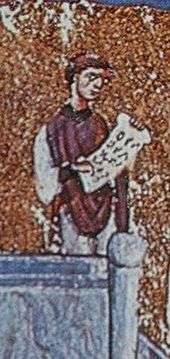
Castration as a means of subjugation, enslavement or other punishment has a very long history, dating back to ancient Sumer. In a Western context, eunuch singers are known to have existed from the early Byzantine Empire. In Constantinople around 400 AD, the empress Aelia Eudoxia had a eunuch choir-master, Brison, who may have established the use of castrati in Byzantine choirs, though whether Brison himself was a singer and whether he had colleagues who were eunuch singers is not certain. By the 9th century, eunuch singers were well-known (not least in the choir of Hagia Sophia) and remained so until the sack of Constantinople by the Western forces of the Fourth Crusade in 1204. Their fate from then until their reappearance in Italy more than three hundred years later is not clear. It seems likely that the Spanish tradition of soprano falsettists may have hidden castrati. Much of Spain was under Muslim rulers during the Middle Ages, and castration had a history going back to the ancient Near East. Stereotypically, eunuchs served as harem guards, but they were also valued as high-level political appointees since they could not start a dynasty which would threaten the ruler.
European classical tradition
Castrati first appeared in Italy in the mid-16th century, though at first the terms describing them were not always clear. The phrase soprano maschio (male soprano), which could also mean falsettist, occurs in the Due Dialoghi della Musica (Two dialogues upon music) of Luigi Dentice, an Oratorian priest, published in Rome in 1553. On 9 November 1555 Cardinal Ippolito II d'Este (famed as the builder of the Villa d'Este at Tivoli), wrote to Guglielmo Gonzaga, Duke of Mantua (1538–1587), that he has heard that the Duke was interested in his cantoretti (little singers) and offered to send him two, so that he could choose one for his own service. This is a rare term but probably does equate to castrato.[3] The Cardinal's nephew, Alfonso II d'Este, Duke of Ferrara, was another early enthusiast, inquiring about castrati in 1556. There were certainly castrati in the Sistine Chapel choir in 1558, although not described as such: on 27 April of that year, Hernando Bustamante, a Spaniard from Palencia, was admitted (the first castrati so termed who joined the Sistine choir were Pietro Paolo Folignato and Girolamo Rossini, admitted in 1599).[3] Surprisingly, considering the later French distaste for castrati they certainly existed in France at this time also, being known of in Paris, Orléans, Picardy and Normandy, though they were not abundant: the King of France himself had difficulty in obtaining them.[3] By 1574, there were castrati in the Ducal court chapel at Munich, where the Kapellmeister (music director) was the famous Orlando di Lasso. In 1589, by the bull Cum pro nostro pastorali munere, Pope Sixtus V re-organised the choir of St Peter's, Rome specifically to include castrati.[4]
Thus the castrati came to supplant both boys (whose voices broke after only a few years) and falsettists (whose voices were weaker and less reliable) from the top line in such choirs. Women were banned by the Pauline dictum mulieres in ecclesiis taceant ("let women keep silent in the churches"; see I Corinthians, ch. 14, v. 34).
The Italian castrati were often rumored to have unusually long lives, but a 1993 study found that their lifespans were average.[5]
Opera
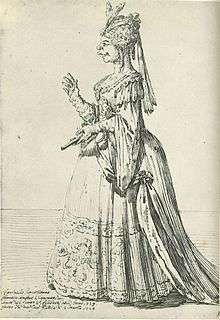
Although the castrato (or musico) predates opera, there is some evidence that castrati had parts in the earliest operas. In the first performance of Monteverdi's Orfeo (1607), for example, they played subsidiary roles, including Speranza and (possibly) that of Euridice. Although female roles were performed by castrati in some of the papal states, this was increasingly rare; by 1680, they had supplanted "normal" male voices in lead roles, and retained their position as primo uomo for about a hundred years;[6] an Italian opera not featuring at least one renowned castrato in a lead part would be doomed to fail. Because of the popularity of Italian opera throughout 18th-century Europe (except France), singers such as Ferri, Farinelli, Senesino and Pacchierotti became the first operatic superstars, earning enormous fees and hysterical public adulation.[7] The strictly hierarchical organisation of opera seria favoured their high voices as symbols of heroic virtue, though they were frequently mocked for their strange appearance and bad acting. In his 1755 Reflections upon theatrical expression in tragedy, Roger Pickering wrote:
Farinelli drew every Body to the Haymarket. What a Pipe! What Modulation! What Extasy to the Ear! But, Heavens! What Clumsiness! What Stupidity! What Offence to the Eye! Reader, if of the City, thou mayest probably have seen in the Fields of Islington or Mile-End or, If thou art in the environs of St James', thou must have observed in the Park with what Ease and Agility a cow, heavy with calf, has rose up at the command of the Milk-woman's foot: thus from the mossy bank sprang the DIVINE FARINELLI.[8]
The means by which future singers were prepared could lead to premature death. To prevent the child from experiencing the intense pain of castration, many were inadvertently administered lethal doses of opium or some other narcotic, or were killed by overlong compression of the carotid artery in the neck (intended to render them unconscious during the castration procedure).[9]
During the 18th century itself, the music historian Charles Burney was sent from pillar to post in search of places where the operation was carried out:
I enquired throughout Italy at what place boys were chiefly qualified for singing by castration, but could get no certain intelligence. I was told at Milan that it was at Venice; at Venice that it was at Bologna; but at Bologna the fact was denied, and I was referred to Florence; from Florence to Rome, and from Rome I was sent to Naples ... it is said that there are shops in Naples with this inscription: 'QUI SI CASTRANO RAGAZZI' ("Here boys are castrated"); but I was utterly unable to see or hear of any such shops during my residence in that city.[10]
The training of the boys was rigorous. The regimen of one singing school in Rome (c. 1700) consisted of one hour of singing difficult and awkward pieces, one hour practising trills, one hour practising ornamented passaggi, one hour of singing exercises in their teacher's presence and in front of a mirror so as to avoid unnecessary movement of the body or facial grimaces, and one hour of literary study; all this, moreover, before lunch. After, half an hour would be devoted to musical theory, another to writing counterpoint, an hour copying down the same from dictation, and another hour of literary study. During the remainder of the day, the young castrati had to find time to practice their harpsichord playing, and to compose vocal music, either sacred or secular depending on their inclination.[11] This demanding schedule meant that, if sufficiently talented, they were able to make a debut in their mid-teens with a perfect technique and a voice of a flexibility and power no woman or ordinary male singer could match.
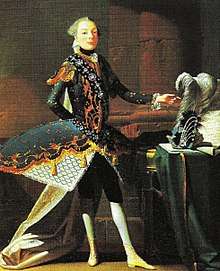
In the 1720s and 1730s, at the height of the craze for these voices, it has been estimated that upwards of 4,000 boys were castrated annually in the service of art.[12] Many came from poor homes and were castrated by their parents in the hope that their child might be successful and lift them from poverty (this was the case with Senesino). There are, though, records of some young boys asking to be operated on to preserve their voices (e.g. Caffarelli, who was from a wealthy family: his grandmother gave him the income from two vineyards to pay for his studies[13]). Caffarelli was also typical of many castrati in being famous for tantrums on and off-stage, and for amorous adventures with noble ladies.[14] Some, as described by Casanova, preferred gentlemen (noble or otherwise).[15] Only a small percentage of boys castrated to preserve their voices had successful careers on the operatic stage; the better "also-rans" sang in cathedral or church choirs, but because of their marked appearance and the ban on their marrying, there was little room for them in society outside a musical context.[16]
The castrati came in for a great amount of scurrilous and unkind abuse, and as their fame increased, so did the hatred of them. They were often castigated as malign creatures who lured men into homosexuality. There were homosexual castrati, as Casanova's accounts of 18th-century Italy bear witness. He mentions meeting an abbé whom he took for a girl in disguise, only later discovering that "she" was a famous castrato. In Rome in 1762 he attended a performance at which the prima donna was a castrato, "the favourite pathic" of Cardinal Borghese, who dined every evening with his protector. From his behaviour on stage "it was obvious that he hoped to inspire the love of those who liked him as a man, and probably would not have done so as a woman".[17]
Decline
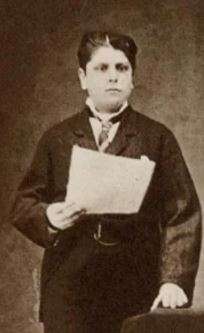
By the late 18th century, changes in operatic taste and social attitudes spelled the end for castrati. They lingered on past the end of the ancien régime (which their style of opera parallels), and two of their number, Pacchierotti and Crescentini, even entranced the iconoclastic Napoleon. The last great operatic castrato was Giovanni Battista Velluti (1781–1861), who performed the last operatic castrato role ever written: Armando in Il crociato in Egitto by Meyerbeer (Venice, 1824). Soon after this they were replaced definitively as the first men of the operatic stage by a new breed of heroic tenor, as first incarnated by the Frenchman Gilbert-Louis Duprez, the earliest so-called "king of the high Cs". His successors have included such singers as Enrico Tamberlik, Jean de Reszke, Francesco Tamagno, Enrico Caruso, Giovanni Martinelli, Beniamino Gigli, Jussi Björling, Franco Corelli and Luciano Pavarotti, among others.
After the unification of Italy in 1861, castration for musical purposes was officially made illegal (the new Italian state had adopted a French legal code which expressly forbade the practice). In 1878, Pope Leo XIII prohibited the hiring of new castrati by the church: only in the Sistine Chapel and in other papal basilicas in Rome did a few castrati linger. A group photo of the Sistine Choir taken in 1898 shows that by then only six remained (plus the Direttore Perpetuo, the fine soprano castrato Domenico Mustafà), and in 1902 a ruling was extracted from Pope Leo that no further castrati should be admitted. The official end to the castrati came on St. Cecilia's Day, 22 November 1903, when the new pope, Pius X, issued his motu proprio, Tra le Sollecitudini ('Amongst the Cares'), which contained this instruction: "Whenever ... it is desirable to employ the high voices of sopranos and contraltos, these parts must be taken by boys, according to the most ancient usage of the Church."
The last Sistine castrato to survive was Alessandro Moreschi, the only castrato to have made solo recordings. While an interesting historical record, these discs of his give us only a glimpse of the castrato voice – although he had been renowned as "The Angel of Rome" at the beginning of his career, some would say he was past his prime when the recordings were made in 1902 and 1904 and he never attempted to sing opera. Domenico Salvatori, a castrato who was contemporary with Moreschi, made some ensemble recordings with him but has no surviving solo recordings.[18] The recording technology of the day was not of modern high quality. Salvatori died in 1909; Moreschi retired officially in March 1913, and died in 1922.
The Catholic Church's involvement in the castrato phenomenon has long been controversial, and there have recently been calls for it to issue an official apology for its role. As early as 1748, Pope Benedict XIV tried to ban castrati from churches,[19] but such was their popularity at the time that he realised that doing so might result in a drastic decline in church attendance.[20][21]
The rumours of another castrato sequestered in the Vatican for the personal delectation of the Pontiff until as recently as 1959 have been proven false. The singer in question was a pupil of Moreschi's, Domenico Mancini, such a successful imitator of his teacher's voice that even Lorenzo Perosi, Direttore Perpetuo of the Sistine Choir from 1898 to 1956 and a strenuous opponent of the practice of castrato singers, thought he was a castrato. Mancini was in fact a moderately skilful falsettist and professional double bass player.[22]
Modern castrati and similar voices
So-called "natural" or "endocrinological castrati" are born with hormonal anomalies, such as Klinefelter's syndrome and Kallmann's syndrome, or have undergone unusual physical or medical events during their early lives that reproduce the vocal effects of castration without being castrated. Basically, a male can retain his child voice if it never changes during puberty. The retained voice can be the treble voice shared by both sexes in childhood and is the same as boy soprano voice. But as evidence shows, many castratos, such as Senesino and Caffarelli, were actually altos (mezzo-soprano) – not sopranos.
Jimmy Scott, Robert Crowe and Radu Marian are examples of this type of high male voice.[23] Michael Maniaci is somewhat different, in that he has no hormonal or other anomalies, but for some unknown reason, his voice did not "break" in the usual manner, leaving him still able to sing in the soprano register.[24] Other uncastrated male adults sing soprano, generally using some form of falsetto but in a much higher range than most countertenors. Examples are Aris Christofellis,[25] Jörg Waschinski,[26] and Ghio Nannini.[27]
However, it is believed the castrati possessed more of a tenorial chest register (the aria "Navigante che non spera" in Leonardo Vinci's opera Il Medo, written for Farinelli, requires notes down to C3, 131 Hz).[28] Similar low-voiced singing can be heard from the jazz vocalist Jimmy Scott, whose range matches approximately that used by female blues singers.[29] High-pitched singer Jordan Smith has demonstrated having more of a tenorial chest register.[30]
Actor Chris Colfer has soprano voice. Colfer has stated in interviews that when his voice began to change at puberty he sang in a high voice "constantly" in an effort to retain his range.[31] Actor and singer Alex Newell has soprano range. Voice actor Walter Tetley may or may not have been a castrato; Bill Scott, a co-worker of Tetley's during their later work in television, once half-jokingly quipped that Tetley's mother "had him fixed" to protect the child star's voice-acting career. Tetley never personally divulged the exact reason for his condition, which left him with the voice of a preteen boy for his entire adult life.[32] Famed agriculture professor George Washington Carver was also reputed to have been castrated and had a high, childlike voice and stunted growth even in adulthood.[33]
Turkish popular singer Cem Adrian has the ability to sing from bass to soprano, his vocal folds having been reported to be three times the average length.
Notable castrati
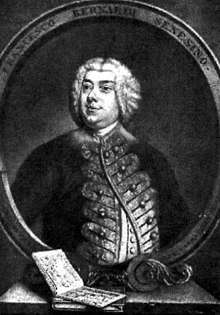
- Giovanni Bacchini ("Bacchino")
- Loreto Vittori (1604–1670)
- Baldassare Ferri (1610–1680)
- Atto Melani (1626–1714)
- Giuseppe Panici (1634–1702)[34]
- Giovanni Grossi ("Siface") (1653–1697)
- Pier Francesco Tosi (1654–1732)
- Francesco Pistocchi ("Pistocchino") (1659–1726)
- Matteo Sassano ("Mateuccio") (1667–1737)
- Nicolo Grimaldi ("Nicolini") (1673–1732)
- Antonio Bernacchi (1685–1756)
- Francesco Bernardi ("Senesino") (1686–1758)
- Valentino Urbani ("Valentini") (1690–1722)
- Giacinto Fontana ("Farfallino") (1692–1739)
- Giovanni Carestini ("Cusanino") (c. 1704–c. 1760)
- Carlo Broschi ("Farinelli") (1705–1782)
- Domenico Annibali ("Domenichino") (1705–1779)
- Gaetano Majorano ("Caffarelli") (1710–1783)
- Felice Salimbeni (1712–1752)
- Giaocchino Conti ("Gizziello") (1714–1761)
- Mariano Nicolini ("Marianino") (c. 1715–1758)
- Giovanni Manzuoli (1720–1782)
- Gaetano Guadagni (1725–1792)
- Antonio Albanese (1729 or 1731–1800)
- Silvio Giorgetti (1733–c. 1802)
- Giusto Fernando Tenducci (ca. 1736–1790)
- Giuseppe Millico ("Il Muscovita") (1737–1802)
- Gasparo Pacchierotti (1740–1821)
- Venanzio Rauzzini (1746–1810)
- Luigi Marchesi ("Marchesini") (1754–1829)
- Vincenzo dal Prato (1756–1828)
- Girolamo Crescentini (1762–1848)
- Giovanni Battista "Giambattista" Velluti (1781–1861)
- Domenico Mustafà (1829–1912)
- Domenico Salvatori (1855–1909)
- Alessandro Moreschi (1858–1922), the only castrato to be recorded
See also
References
- Lancet The Voice of the Castrato, Archived 11 June 2012 at the Wayback Machine 1998; 351: pp. 1877–80.
- New Grove Dictionary of Opera, vol 3, p. 529, sv "musico"
- Sherr
- Milner, Anthony. (1973). "The Sacred Capons". Musical Times 114(1561): 250–52
- "Castrated men live longer". ami.group.uq.edu.au. 7 March 2013. Retrieved 13 July 2020.
- see Heriot, A: The Castrati in Opera (London, 1956), pp. 31 ff
- Heriot chs. 1–3 passim
- Pickering, R: Reflections on Theatrical Expression in Tragedy (London, 1755), p. 63
- such procedures are described in D'Ancillon, as translated into English by Samber, R.: Eunuchism Display'd ... (London, 1718), pp. 15–16
- Scholes, P (ed): Dr Burney's Musical Tours in Europe (London, 1959), vol. 1, p. 247
- see Bontempi, G: Historia Musica (Perugia, 1695), p. 170
- a claim first made in Pleasants, H., "The Castrati", Stereo Review, July 1966, p. 38)
- Faustini-Fassini, E.: Gli astri maggiori del bel canto napoletano in Note d'archivio 15, (1938), p. 12
- see Heriot, pp. 141–54
- Casanova, G. Memoirs (tr. A. Machen, with additional tr. by A. Symons (London, 1894) vol. 4c, ch. 10; available online at www.gutenberg.net
- for a general discussion of castrati in society, see Barbier, ch. 7
- Angus Heriot, The Castrati in Opera, London, 1956; Ed Wayne Dynes, Encyclopedia of Homosexuality, New York, 1990
- Clapton, N.: Alessandro Moreschi and the World of the Castrato (London, 2008), pp. 197–216
- Barbier, P. (trans. M. Crosland) (1998). "Chapter 6. The Castrati and the Church". The World of the Castrati: the history of an extraordinary operatic phenomenon. London: Souvenir Press. ISBN 0-285-63460-7.
- Frosch, W.A. (2006). "The sopranos: post-op virtuosi". The FASEB Journal. 20 (6): 595–97. doi:10.1096/fj.06-0402ufm. PMID 16581964.
- Chadwick, O. (1981). The Popes and European Revolution. Oxford, England: Oxford University Press. p. 89. ISBN 0-19-826919-6.
- Clapton, N.: Alessandro Moreschi and the World of the Castrato (London, 2008), pp. 180–81, 200
- "The Male Soprano Page". Tp4.rub.de. Archived from the original on 20 December 2015. Retrieved 30 August 2015.
- Loder, S.C. (12 April 2005). "An interview with Michael Maniaci". Opera Today. Archived from the original on 24 September 2015. Retrieved 30 August 2015.
- "Aris Christofellis". Archived from the original on 30 June 2009.
- "Jörg Waschinski, sopranist". Joerg-waschinski.de. Archived from the original on 18 August 2015. Retrieved 30 August 2015.
- "Ghio Nannini". Archived from the original on 17 October 2008.
- Haböck, F. (1923). Die Gesangkunst der Kastraten [The Singing Skills of the Castratos] (in German). Vienna. pp. 10–15.
- "Jimmy Scott official website". Archived from the original on 20 May 2009.
- "Jordan Smith - Ave Maria ('Tis The Season Live)". 23 November 2016. Archived from the original on 2 May 2018. Retrieved 6 May 2018 – via YouTube.
- Milzoff, Rebecca. "Glee's Chris Colfer on owning 'Defying Gravity' and resembling a Hummel figurine – Vulture". NYMag.com. Archived from the original on 19 November 2009. Retrieved 7 November 2011.
- Keith Scott (2000). The Moose That Roared – The story of Jay Ward, Bill Scott, a flying squirrel and a talking moose. St. Martins Press. ISBN 0-312-19922-8.
- Spivey, Yolanda (15 September 2014). "The C@stration of George Washington Carver". Black Time Travel. Retrieved 2 June 2018.
- Frosch, W.A. (2006). "The sopranos: post-op virtuosi". The FASEB Journal 20 (6): 475–79
Bibliography
- Bontempi, G. (1695). Historia Musica. Perugia.
- Casanova, G. (1894). Memoirs. Translated by Machen, A. additional tr. by Symons, A. London.
- Clapton, N. (2004). Moreschi, the Last Castrato. London.
- Cont, A. (2017). "Evirati cantori e mondo nobiliare: Un contributo allo studio delle dinamiche sociali dell'Italia barocca". Atti della Accademia Roveretana degli Agiati. IX. pp. 165–188.
- Freitas, R. (Spring 2003). "The eroticism of emasculation: Confronting the Baroque body of the castrato". Journal of Musicology. 20 (2): 196–249.
- Haböck, F. (1927). Die Kastraten und ihre Gesangskunst [The Castratos and their Art of Song]. Berlin.
- Heriot, A. (1956). The Castrati in Opera. London.
- Howard, P. (2014). The Modern Castrato: Gaetano Guadagni and the coming of a new operatic age. New York.
- Moran, N. (2002). "Byzantine castrati". Plainsong and Medieval Music. Cambridge. 11 (2): 99–112.
- Pleasants, H. (July 1966). "The Castrati". Stereo Review.
- Scholes, P., ed. (1959). Dr. Burney's Musical Tours in Europe. London.
- Sherr, R. (Spring 1980). "Guglielmo Gonzaga and the castrati". Renaissance Quarterly. 33 (1): 33–56.
- Rosselli, J. (1988). "The castrati as a professional group and a social phenomenon, 1550–1850". Acta Musicologica. Basel. LX.
- Tougher, S., ed. (2002). Eunuchs in Antiquity and Beyond. London.
External links
- All you would like to know about Castrati
- Castrados por amor al arte
- Singing Voice: Castrati
- Recordings:
- Antonio Maria Bononcini's Vorrei pupille belle, sung by Radu Marian
- 1904 Recording of Alessandro Moreschi singing Bach/Gounod Ave Maria
- Javier Medina Avila, including an audio sample (Riccardo Broschi: Ombra fedele anch'io)